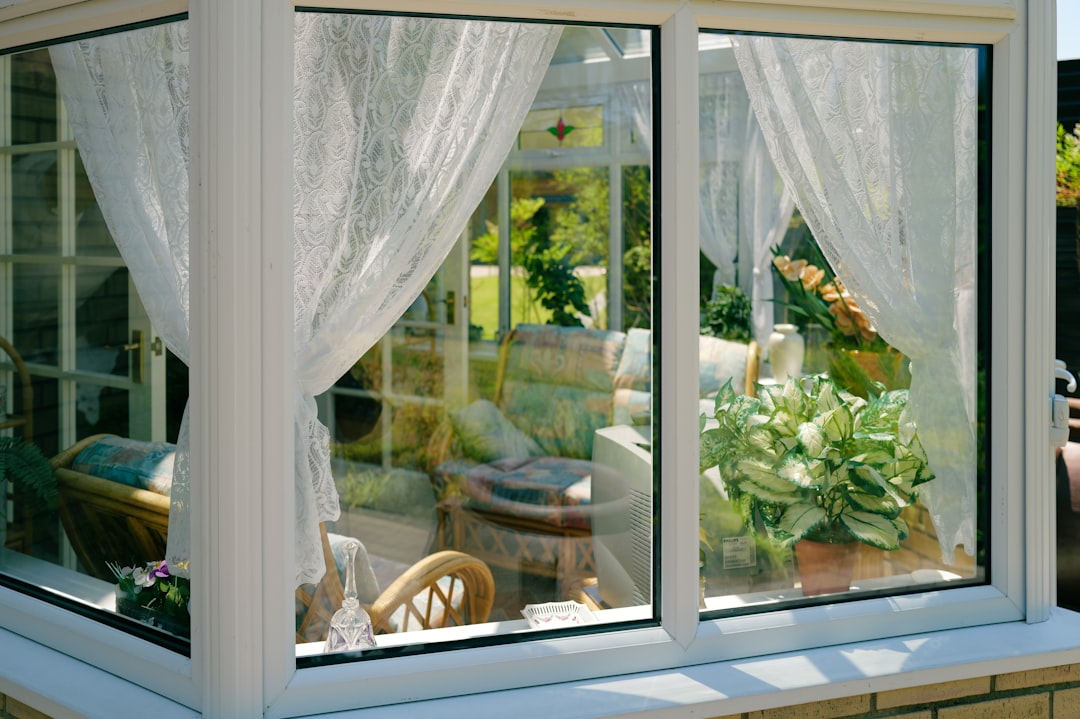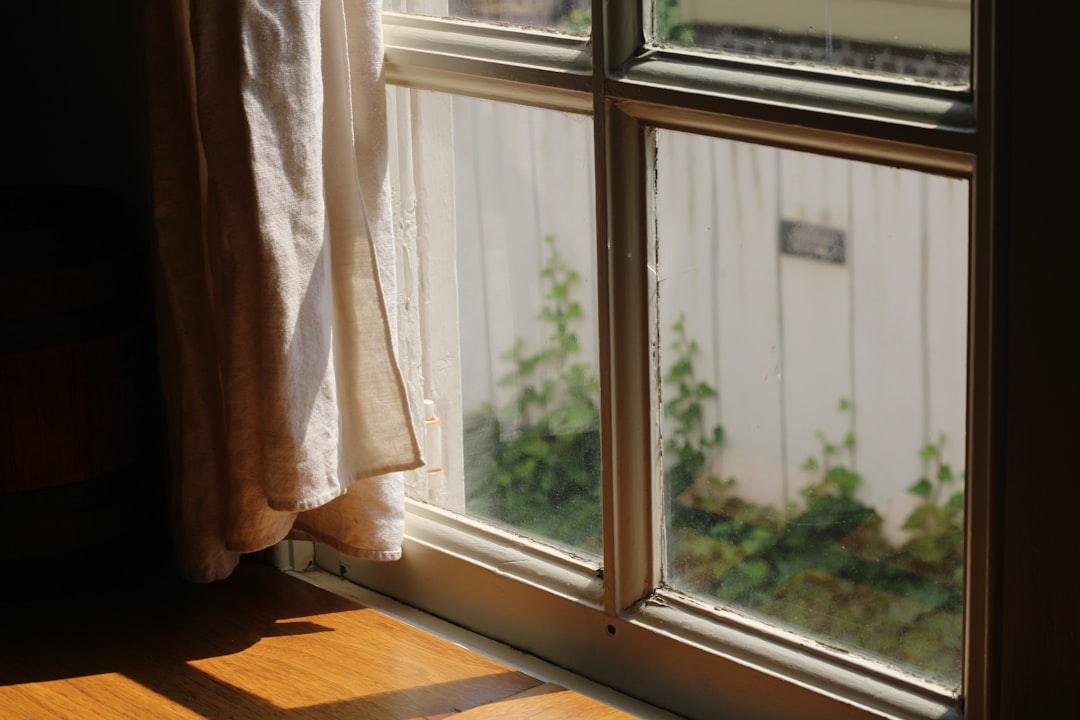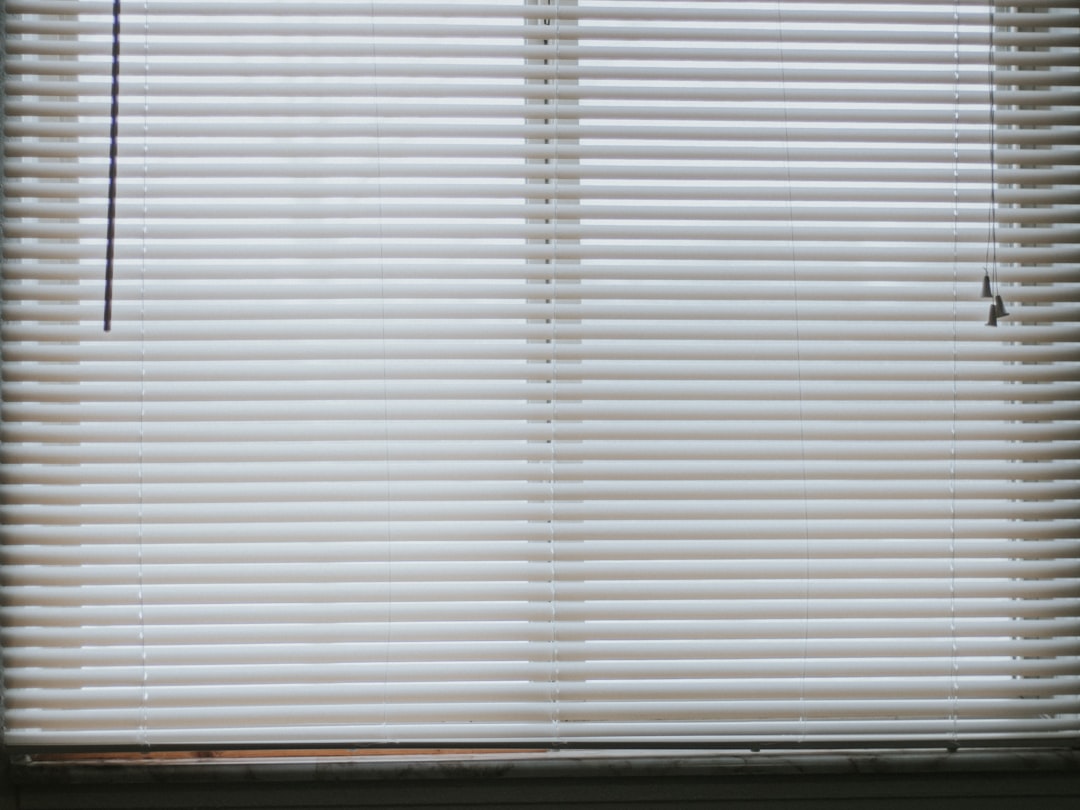

Engage prospects with a scan and streamline customer engagement with FREE QR code marketing tools by Sona – no strings attached!
Create a Free QR CodeFree consultation

No commitment

Engage prospects with a scan and streamline customer engagement with FREE QR code marketing tools by Sona – no strings attached!
Create a Free QR CodeFree consultation

No commitment
For window shade cleaning services, bridging the gap between physical and digital touchpoints presents challenges that can slow business growth and hinder client engagement. Many customers see appointment reminders, product care labels, or mailers but hesitate to act, often because traditional systems make scheduling inconvenient, educational content hard to access, or follow-up nearly impossible. With the evolution of window coverings and rising expectations for seamless service, analog processes like manual bookings, untrackable flyers, and static brochures mean lost opportunities, inability to trace ROI, and a lack of insight into who is really interested.
QR codes have rapidly become a vital bridge between offline discovery and instant online action, as outlined in this QR marketing guide. A quick scan can now lead customers to booking forms, cleaning tutorials, eco-safe product recommendations, or tailored support without the need for a special app. These simple codes solve longstanding pain points, turning previously anonymous interest into actionable data, empowering timely follow-up even if no form is filled out, and finally creating visibility into which marketing channels contribute to revenue.
By embedding QR codes into product packaging, print ads, care instructions, or appointment cards, window shade cleaning services offer customers on-demand convenience while generating clear, trackable insights to refine campaigns and maximize conversions. With the right QR code strategies, closed-loop attribution and higher-value prospect engagement are now realistic goals. Here is how to make it work for your business.

Many cleaning businesses wrestle with dropped leads and untrackable print campaigns, especially when prospects interact with brochures or booklets but never submit their details. QR codes change this by transforming every printed item or in-person contact into an online gateway. Instead of letting DIY-leaning visitors slip away, a QR on shade tags can let homeowners access tailored washing guides or schedule appointments instantly. At events, signage with QR codes can help identify anonymous traffic that might otherwise remain invisible, capturing data from people who would walk by without engaging.
Replacing clunky paper intake forms and disconnected landing pages with QR-driven workflows reduces manual labor, eliminates unnecessary friction, and supports immediate, measurable engagement. Leveraging platforms like Sona QR provides robust analytics, whether you are tracking which mailer performs best or whether labels on vertical vs. cellular shades generate more bookings. Every touchpoint becomes an opportunity to learn and improve, and each scan can trigger a specific next step such as adding a reminder, starting a chat, or pre-populating a service request.
Outdated analog processes are ripe for replacement. Printed brochures that list a phone number can be superseded by QR codes that open a one-click scheduling flow with preferred time windows and service add-ons. Paper feedback forms can become mobile-friendly surveys that capture satisfaction scores and testimonials right after service, guided by this google forms guide. Manual sign-up sheets at home shows can be replaced by QR-enabled giveaways where visitors scan to enter, consent to follow-up, and receive a discount code. The result is a faster path from discovery to conversion and a cleaner stream of data you can use to improve targeting and service delivery.
To keep these efforts focused, define your success metrics early. Examples include scan-to-booking rate, average time to schedule after a scan, scan volume by channel, and repeat booking rate tied to post-service QR prompts. These numbers will reveal where friction still exists and where to expand the program.

A persistent struggle in this industry is motivating customers to act swiftly and distinguishing high-value prospects from passive browsers. Many window shade cleaning services lack the ability to see who is interested when a care label, reminder card, or ad is shared, resulting in a missed chance to engage or upsell. Using QR codes, static information such as cleaning instructions, rescheduling reminders, or direct mail coupons becomes an entry point to digital forms, feedback surveys, or time slot selection. For businesses serving eco-minded customers, dynamically updating codes on packaging or inserts lets you deliver the latest cleaning recommendations or safety updates instantly. For additional inspiration, see these cleaning QR tips.
More importantly, QR analytic platforms surface engagement signals that previously went unnoticed. When customers scan but do not book, you still capture valuable data for timely Sona retargeting or segmentation. By turning anonymous interest into recognizable lead signals, QR campaigns help avoid the frustration of missing potential conversions. This shift can influence revenue growth, capacity planning, and customer lifetime value since every scan is an invitation to build a more personalized journey.
Consider how common materials in shade cleaning become more powerful with QR codes. Appointment cards can include a code that supports instant rescheduling, reducing no-shows and call volume. Flyers dropped at neighborhoods with older homes can feature a QR that leads to a quote estimator, accelerating the path to a paid visit. Care instructions included with newly installed shades can direct owners to fabric-specific videos, which in turn present a booking option if stains persist. Each scenario gives customers a fast track to action and gives your team insight into what information drives engagement.

The practical challenge of following up with every interested party is compounded by the limitations of traditional print channels, which cannot tie responses back to specific campaigns or customer profiles. QR codes resolve this by attaching unique tracking to each use case. Certain formats are especially useful in window shade cleaning.
Dynamic QR codes deserve special attention. With Sona QR, you can change a code’s destination after printing, run A/B tests on landing pages, attach UTM parameters for attribution, and segment traffic by placement. Static codes work for evergreen assets such as a PDF care guide, but dynamic codes are the better choice for trackable, flexible campaigns where content and offers evolve.

Window shade cleaning services often struggle with patchy outreach and missed high-intent visitors across local or neighborhood campaigns. Strategic QR placements address these weak points by creating on-ramps where attention already exists. Prioritize surfaces and situations that correlate with immediate need, such as when a homeowner is looking at dusty shades, sorting mail, or speaking with a technician.
Each QR placement becomes a data point revealing where and when prospects show intent. Use this to segment by region, shade type, or purchase cycle, then retarget with offers tuned to that context. Over time, you will know which neighborhoods respond to seasonal offers, which materials yield longer engagement, and which placements consistently produce high-value bookings.

Real-world use cases show how QR codes translate into conversions, customer satisfaction, and better lifetime value. The following examples focus on common customer interactions where quick access to information or scheduling matters most.
Beyond these three, consider a service completion card with a QR linking to reviews and referral rewards or a showroom poster where visitors scan to save your contact and receive a seasonal care guide. For review capture, use this google reviews QR. Each use case embodies the same principle: shorten the path from interest to action while collecting intent data that fuels smarter marketing.
Each QR scan is a micro-conversion that carries intent and context. Learn more about intent data. By deploying unique codes across touchpoints, you can automatically segment audiences and personalize follow-up based on what, where, and when they scanned. This turns anonymous offline engagement into structured digital signals that your CRM and ad platforms can act on.
Start by mapping scanning opportunities to your buyer journey. Awareness moments might include neighborhood flyers and vehicle decals. Consideration moments occur when customers engage with care labels, watch technique videos, or review material-specific instructions. Conversion moments appear on coupons, pricing sheets, or final scheduling pages. Assign different QR codes to each stage and tag them accordingly in Sona QR so your lists build themselves with accurate context.
Segmentation becomes stronger when you capture distinctions that matter in shade cleaning. For example, homeowners who scan after installation often want best-practice tips, while property managers who scan invoices may be budget oriented and value bundle pricing. Eco-conscious scanners respond to content about biodegradable solutions, whereas urgent cleaners might want same-week availability and stain triage guidance. Use these distinctions to vary your follow-up: educational sequences for DIY-leaning audiences, limited-time promotions for price-sensitive segments, and white-glove add-ons for high-value homeowners.
Feed these segments into your CRM and ad tools. With Sona QR, you can sync lists to HubSpot, Salesforce, or Meta Ads to trigger emails, SMS reminders, and custom audiences for retargeting; for CRM setup, see Sona + HubSpot. The net effect is a cleaner pipeline, warmer outreach, and better return on every print dollar.
Disconnected marketing efforts remain a common weak spot in this category, as campaigns often rely on one-off mailers or passive websites that do not capture intent. QR codes function as connective tissue across channels, giving you a way to capture and continue the conversation in real time. By placing codes across your most visible assets, you not only reduce friction for customers but also gather valuable data about what is working.
QR codes serve as the offline onramp to your digital marketing engine. Consolidate management and analytics in a platform like Sona QR to monitor performance, sync scan data with your CRM, and orchestrate follow-up across channels. The goal is a coherent customer journey where every offline moment can trigger a smart digital next step.
A thoughtful execution plan makes the difference between scattered experiments and a scalable, data-driven program. Use this checklist to scope your first campaign or to refine existing deployments. Anchor every decision to a single outcome such as increasing booked appointments, driving reviews, or growing eco-friendly upsells.
Begin by selecting one high-intent placement and one clear action you want a customer to take. Then map the landing experience so it is instantly useful. For example, a code on a care label should not land on a generic homepage. It should open a fabric-specific guide with a booking button and a short video. Keep the promise of your call to action front and center so scanners feel rewarded.
Pick a use case that aligns with a specific business goal and a moment of natural intent. If customers frequently lose printed instructions, put QR codes on product tags and service cards that open a mobile-friendly guide. If no-shows are a problem, focus on appointment cards with QR-enabled rescheduling and add-to-calendar functionality.
Decide between static and dynamic codes. Static codes can be used for evergreen PDFs or pages that will not change, but they are not trackable or editable. Dynamic codes are trackable, editable, and ideal for campaigns where offers, landing pages, or targeting will evolve.
Design affects scan rates. Branded frames, clear calls to action, and sufficient contrast are must-haves. Size the code appropriately for the viewing distance. Test scannability on the actual material, under common lighting, and with multiple devices. For fundamentals, see qr codes in marketing.
Roll out to the channels with the highest potential impact first. In this industry, labels, invoices, direct mail, and vehicle signage often outperform generic posters. Stagger deployment so you can learn from early data and optimize placements before scaling.
Analytics convert scans into strategy. Review which placements generate the most scans, which landing pages convert, and where drop-offs occur. Iterate on copy, offers, and page layout. Use findings to inform staffing, promotions, and creative.
The absence of clear attribution is a common stumbling block for shade cleaning service providers, especially when multiple touchpoints dilute insight into what actually drove a new booking. QR codes, tracked end to end within solutions like Sona QR, offer visibility into each scan, when and where it happened, and how it connects to revenue events such as bookings or information requests. By integrating engagement data with your CRM and mapping QR interactions to sales, you can finally tie offline actions to digital outcomes with proper offline attribution.
This increased visibility allows you to prove campaign effectiveness, justify budget, and optimize with confidence. Instead of relying on assumptions, you can see that a particular neighborhood mailer produced a strong scan-to-quote rate, while a certain care label generated many views but few bookings. You can then adjust the landing page, change the offer, or improve the CTA positioning on the label. Analytics become part of a continuous improvement loop.
Sona QR captures real-world engagement. Sona.com turns that engagement into insights and attribution you can act on, making QR codes part of your performance marketing strategy. When scan data is integrated and visible, every print and in-person interaction becomes both measurable and optimizable.
Scaling QR code success is about repeatability, clarity, and context. Small details such as list segmentation, landing page speed, and field pre-fill can determine whether a scan becomes a booking. Adopt a set of best practices that fit the physical media and buyer journeys common to this industry.
Creative deployments can add momentum. Put a QR on seasonal service cards that encourages repeat bookings six months out. Add a small QR sticker to the back of remote controls for motorized shades that opens a quick-cleaning guide and a “Book pro cleaning” button. These touches turn your brand into a helpful presence in everyday settings.
QR codes are not just digital shortcuts. They represent a strategic way to solve persistent attribution and engagement challenges in window shade cleaning services. By weaving QR campaigns through print and in-person channels, you gain insight into intent signals, accelerate bookings, and clarify which marketing initiatives drive real value. When every scan is tracked and each journey stage is mapped, optimizing for growth becomes a process you can trust.
Window shade cleaning services that integrate QR code-driven campaigns gain an edge in efficiency and customer experience. By connecting offline engagement with digital follow-up, you can capture previously lost leads, educate customers more effectively, and generate measurable results across every channel. With Sona QR handling creation, tracking, and integrations, and Sona.com linking scans to revenue, you have everything you need to capture demand at the source and convert it into outcomes that matter. Start creating QR codes for free.
QR codes have transformed window shade cleaning services from simple appointments into dynamic, measurable growth opportunities. Whether it’s attracting new clients, enhancing customer convenience with instant access to service details, or streamlining booking and feedback, QR codes replace outdated methods with seamless, mobile-friendly interactions that capture real-time engagement data to boost conversions.
Imagine clients scanning a code to instantly schedule a cleaning, access maintenance tips, or provide feedback—all while you track which campaigns drive the most bookings. With Sona QR, you can create dynamic, trackable QR codes in seconds, update your marketing materials without reprinting, and directly link every scan to increased revenue. No more missed leads, just smarter, more effective customer acquisition.
Start for free with Sona QR today and turn every scan into a loyal customer and a cleaner, brighter future.
You can use QR codes found on shade tags or care labels to access tailored washing guides and fabric-specific cleaning videos that show how to spot clean safely at home.
Professional cleaning helps maintain shade condition, reduces replacements, offers eco-friendly product options, and ensures effective stain removal through expert care and timely service bookings.
You can find local window shade cleaning services by scanning QR codes on appointment cards, direct mail, vehicle signage, or flyers that link to location-aware booking forms or quote estimators.
Professionals offer tailored cleaning based on shade material, use eco-safe products, provide stain treatment, and may include add-ons like deodorizing or UV-safe treatments, often accessed via QR code-guided bookings.
Appointments can be scheduled instantly by scanning QR codes on care labels, appointment cards, or direct mail which lead to mobile-friendly booking forms with preferred time windows and service options.
Use Sona QR's trackable codes to improve customer acquisition and engagement today.
Create Your FREE Trackable QR Code in SecondsJoin results-focused teams combining Sona Platform automation with advanced Google Ads strategies to scale lead generation

Connect your existing CRM

Free Account Enrichment

No setup fees
No commitment required

Free consultation

Get a custom Google Ads roadmap for your business






Launch campaigns that generate qualified leads in 30 days or less.
